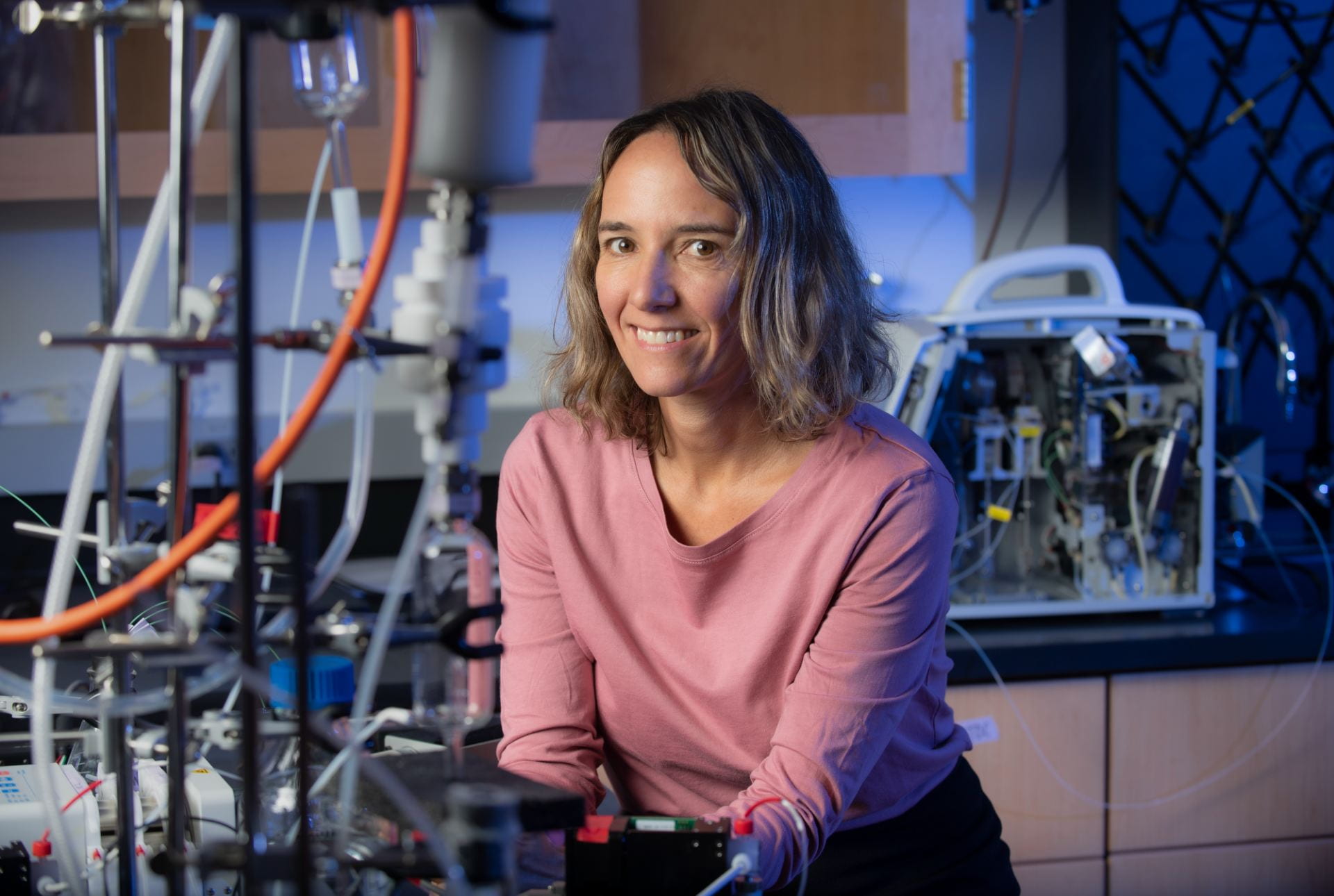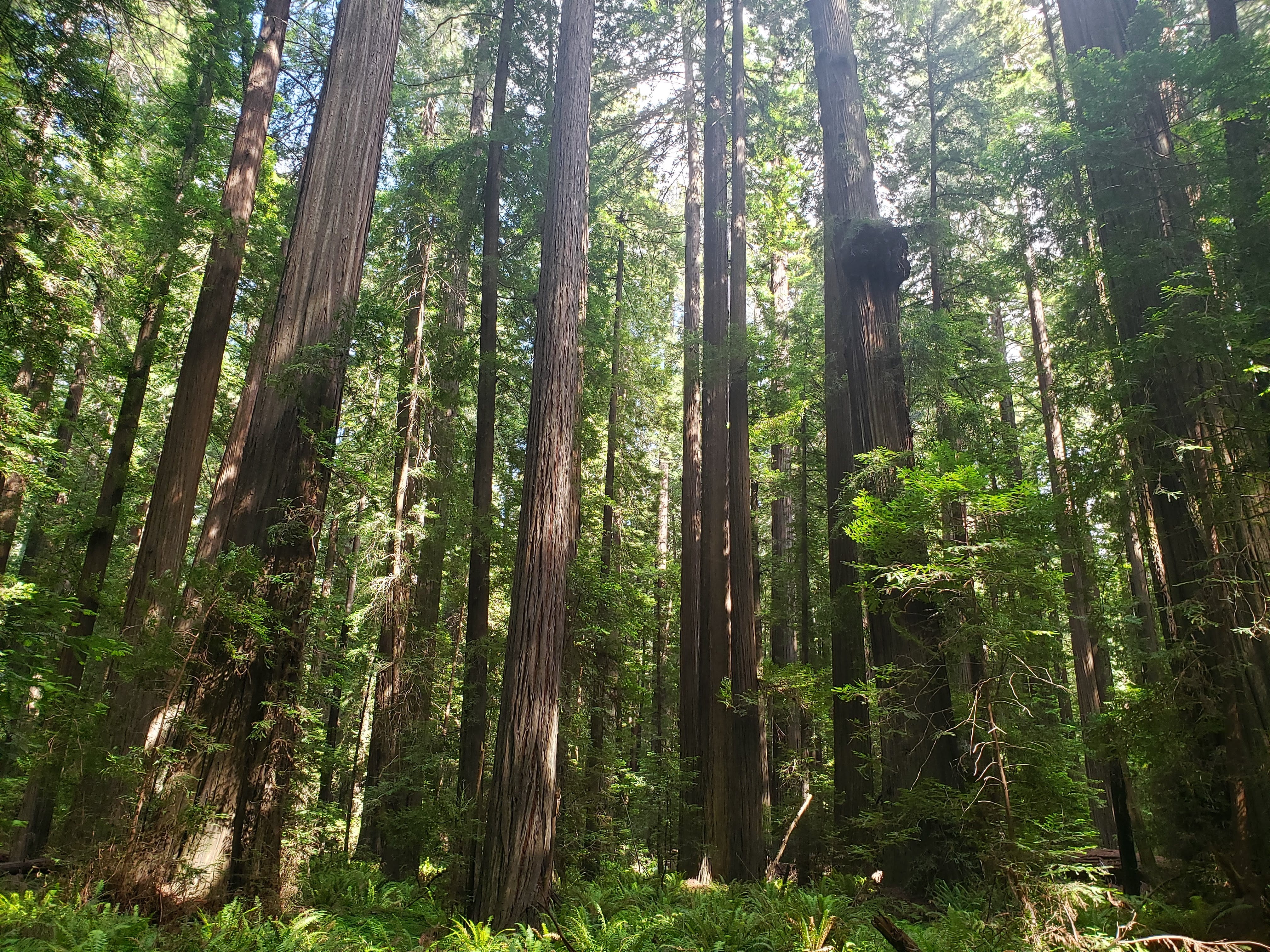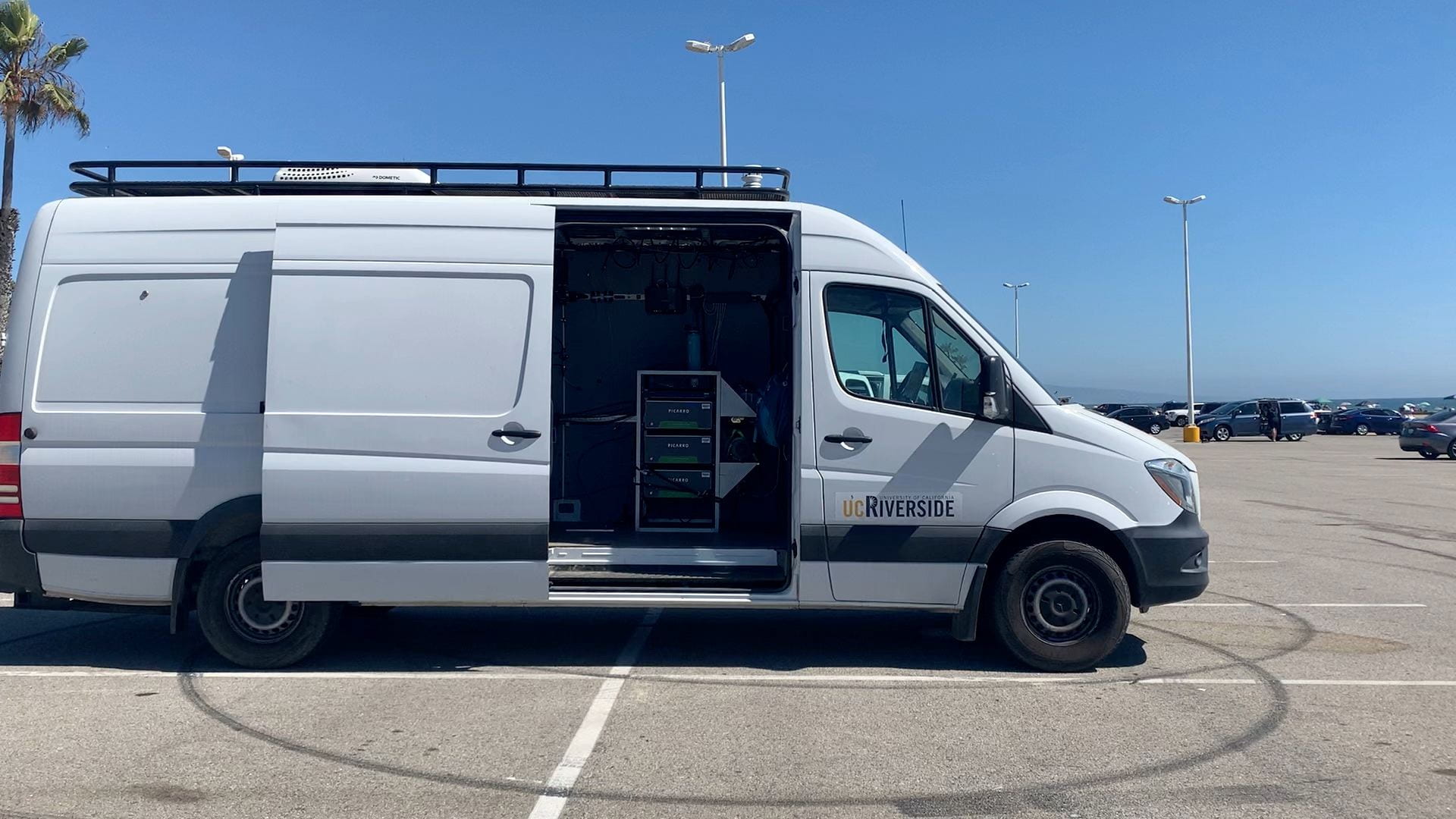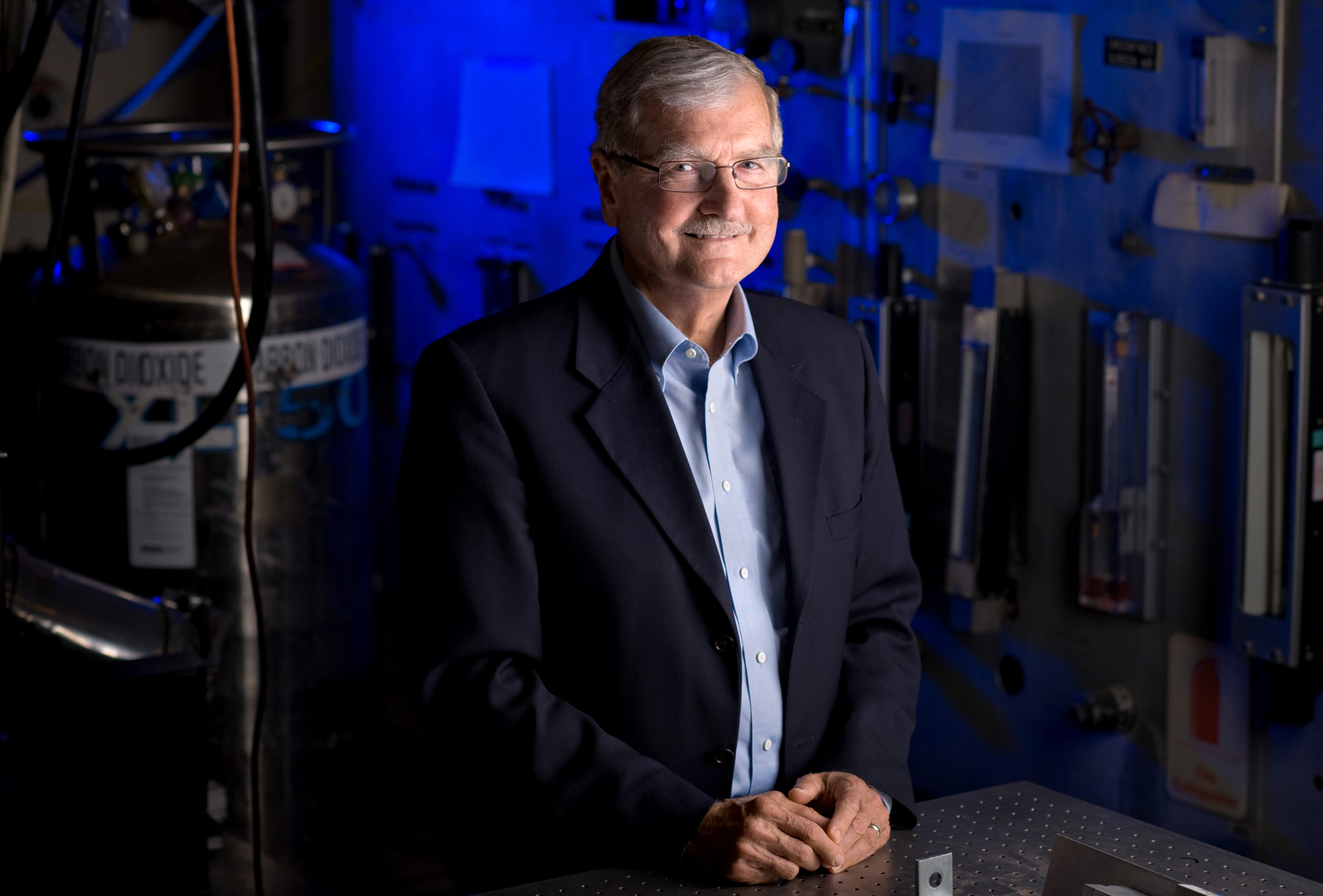UCI Podcast: Bringing science to White House policy making
During her government fellowship, Ann Marie Carlton is seeking to use data to reduce pollution from agriculture

Science and policy are frequently disconnected. Though scientists urged policymakers at the COP 26 climate talks in Glasgow, Scotland to drastically reduce emission of carbon dioxide, the pledges that resulted won’t do enough to stave off the most dire effects of climate change. And that’s just the latest example.
But a UCI professor is seeking to bring science into the policymaking process through a fellowship at the White House Office of Science and Technology Policy. In this episode of the UCI Podcast, Ann Marie, Carlton, a professor of atmospheric chemistry at UCI who recently began the Roger Revelle Fellowship in Global Stewardship, discusses why it’s difficult to ensure science informs policy, what she’s aiming to accomplish during her fellowship and how curiosity can help us all think more like scientists.
In this episode:
Ann Marie Carlton, a UCI professor of atmospheric chemistry (follow her on Twitter)
The Carlton Group, Professor Carlton’s lab at UCI
“Ensuring science informs climate policy,” a UCI story about Professor Carlton’s White House fellowship
“White House Continues to Grow Historic Climate and Environment Team,” a White House announcement about Professor Carlton’s fellowship
White House Office of Science and Technology Policy, which advises the president and the executive branch on scientific, engineering, and technological aspects of the economy, national security, homeland security, health, foreign relations, and the environment.
Roger Revelle Fellowship in Global Stewardship, a fellowship program that provide an opportunity for an accomplished scientist to address global stewardship problems
To get the latest episodes of the UCI Podcast delivered automatically, subscribe at:
Apple Podcasts – Google Podcasts – Stitcher – Spotify
Transcript
Factory farms are major emitters of greenhouse gasses and other pollutants, but those emissions are scarcely regulated. It’s a conundrum rooted partly in a lack of detailed data, and partly in the distance between science and policy. But a UCI professor with a White House fellowship is seeking to change that. Why is it difficult for science to inform policy? And how can all of us tap into our curiosity to think like scientists?
From the University of California, Irvine, I’m Aaron Orlowski. And you’re listening to the UCI Podcast. Today, I’m speaking with Ann Marie Carlton, a professor of atmospheric chemistry at UCI who recently started a fellowship in the White House Office of Science and Technology Policy. This interview was recorded before Professor Carlton started her fellowship.
Professor Carlton, thank you so much for joining me today on the UCI Podcast.
Hi Aaron, thanks so much for having me.
So you will be starting a fellowship in the White House. Congratulations! It’s called the Roger Revelle Fellowship in Global Stewardship, and you’ll be joining the White House Office of Science and Technology Policy. But your background is actually in chemistry. And so this basically makes you a chemist who is bridging the divide between science and policy. So in your view, what are the hurdles that sometimes make it challenging for science and for scientists to inform public policy?
So I think that I’m most qualified to talk about scientists who study climate change or air quality or environmental quality, and how that’s a hard thing to inform policy. You know, with climate change, things are bad. We’re locked into a certain amount of change, and change is stress. And, you know, it’s my impression, there’s this general human condition where — you know when you go to the doctor and you get bad news, people will often go get a second opinion, right? But when you go to the doctor and get good news, you don’t normally get a second opinion. And so when people who study the environment, who study climate change, sort of have bad news for policymakers, I think it’s just naturally human to want another opinion. And so I think right now for the topics that I study and care most about, I think that’s part of what makes the communicating with policymakers pretty difficult. And the solutions to climate change are — they’re high hurdles and change is stress
And so even those solutions kind of — even if they’ll make the world better, they sometimes feel like bad news.
I think that’s right. You know, I work in Rowland Hall and Sherry Rowland won the Nobel Prize and his work about stratospheric ozone loss led to the Montreal Protocol and all of these later international agreements. And, one thing that I think about sort of constantly, or that’s in the back of my mind, is that the science behind the stratospheric ozone hole at the time when Sherry first started speaking about this publicly wasn’t as strong as a scient is for climate change, but the solutions were actually pretty easy. We just get rid of aerosol spray cans. That’s not that hard. DuPont just start selling a different type of chemical. That’s not, you know, impossibly hard. But with climate change, it means changing our whole entire electrical grid across the United States. It means changing our transportation systems. And that’s hard.
Yeah, that really is. And I want to talk some more about those solutions a little bit later. But you mentioned your scientific expertise and you work in Rowland hall and you study how gases form particles in the air. So what kind of particles are those?
So I do this thing when I give public talks. So maybe if you’ll just indulge me for a second.
Yeah, for sure.
Okay. So Aaron, will you take a deep breath?
Yeah. So what did you breathe in? Right. You just breathed in billions upon billions of different molecules. Some are present as gases and some are present as particles. And when you take a deep breath like that, it goes into the deepest parts of your lungs where the air you breathe in mixes with your blood and it becomes a part of your body. And so, you know that motivates me and often motivates my students to really want to find out what they just breathed in. And so the interesting thing about particle mass in the atmosphere is that the overwhelming majority of it was not emitted to the atmosphere as a particle. Rather it was emitted as a gas. And then those gases undergo chemical reactions during transport. And then there’s actually the phase transition where those gases become particles. I used to work at EPA and we had this rule of thumb, you know, ozone is a type of gas pollutant and it makes you sick, but particles, particles can kill you. And so the overwhelming majority of health injuries that happen to Americans and worldwide derive, from an air quality perspective, derive from exposure to particulate matter.
Yeah. And I think this summer, we are all going to be reminded of the types of particles that are in the air because of wildfire season and, you know, experiencing all the impacts from smoke and PM 2.5 and all the particulates caused by another issue that’s linked to climate change.
That’s exactly right. And it’s been, just from a scientific perspective, it’s been really remarkable to look at how fires in the West Coast were causing really bad air quality on the East Coast. And so some of what was coming out of the fires was particles. We can see soot. But also there’s a lot of gases that are turning into particles. And so the particles that people on the East Coast were being exposed to from West Coast fires were different from the particles that people on the West Coast were breathing in.
Wow. That’s because those particles were formed en route.
That’s exactly right, yeah.
Wow. Well, so these particles that are linked to these fires are a symptom of climate change. But sometimes these particles also relate to the causes of climate change. Is that right?
Yeah, that’s a really good point. So fire intensity, frequency, acres burned, has been increasing. And California is suffering the brunt of that. But there’s also this thing where particles affect climate. They scatter and absorb incoming radiation from the sun. And they can also serve as cloud condensation nuclei, and so forming clouds. And then that can change regional hydrological cycling. It can change the Earth’s albedo, and all of those things impact climate regionally and globally.
And so do we know how much these types of particles impact climate change compared to, say, carbon dioxide gas. Is one much more powerful than the other?
That’s a really great question. So unlike carbon dioxide, which is a very long-lived pollutant, and generally well-mixed in the Earth’s atmosphere, particles are not as long lived. Maybe their lifetime is on the average of weeks, generally speaking. And so their ability to impact climate is on a much shorter timescale.
So is that something that climate models are able to take into account? Or is it such a short timescale that it doesn’t have a significant impact?
You know, it’s really interesting, when I was a graduate student, actually even younger than a graduate student, the largest uncertainty in climate models was aerosol-cloud interaction. So like when I was telling you how particles in the atmosphere can serve as cloud condensation nuclei. And now that I’m a professor and I’ve been a professor for over a decade, the largest uncertainty in climate models is aerosol-cloud interactions. And part of the reason why is there’s this clear sky bias generally to the way that we study the atmosphere. But just because we were talking about fires, I’ll talk about it in that context.
So right in California, we have these big photogenic fires, and often they create their own weather and they form these pyrocumulus clouds. They’re really, really hard to sample. You can’t just fly directly into a pyrocumulus cloud because, you know, all the ash and stuff would make the engine seize. And so these types of clouds are really interesting because they can sort of punch through to higher levels of the atmosphere, and that lets pollution from those fires travel farther. But they’re really, really hard to study. They’re really, really hard to study. It’s difficult to directly sample them, satellites can observe them remotely and sort of superficially, but they’re really, really hard to study. And aerosol-cloud interactions remain a dominant uncertainty in climate models.
Getting back to your fellowship, one of the issues that you’ll be looking at is how agriculture is an emitter of certain gases that are important for air quality and climate change. So can you tell us a bit more about — what is the project that you’ll be working on during your White House fellowship?
The project that I pitched was how, in the United States, most agriculture and in particular animal husbandry occurs at the industrial scale. The agricultural sector is the largest emitter of methane, which is a greenhouse gas. It’s the largest emitter of ammonia. There was recently a paper in PNAS, the Proceedings of the National Academy of Sciences, that indicated there’s 17,000 deaths — people die earlier than they should — in the United States solely from ammonia emissions from agriculture. And then, also, agriculture is also the largest emitter of N2O. If you sum up all the emissions from all the other sectors, the agriculture sector is still a factor of three times higher for N2O. So ammonia directly affects air quality. Methane directly affects climate. Methane is a greenhouse gas in and of itself and in the atmosphere it oxidizes to form carbon dioxide, which is also a greenhouse gas.
But then the thing about N2O is it’s the fastest growing ozone-depleting substance in the atmosphere. So when I brought up Sherry Rowland before, what he’s famous for is understanding the role of these industrial compounds, this class of compounds called CFCs or chlorofluorocarbons, and how they can destroy ozone in the stratosphere. And N2O can do the same thing. Their concentrations are the fastest growing concentrations of ozone-depleting substances. And something that just kind of sticks with me is President Biden wants the United States to sign on to this agreement, the Kagali Agreements, and it’s derived from the Montreal Protocol and it’s about banning CFCs and certain types of replacement compounds, industrial produced replacement compounds. However, N2O keeps growing and growing, and those emissions are unregulated. And the Revelle Fellowship is about global stewardship. And the thing is most agriculture happens in the Northern Hemisphere — that’s where most people live because that’s where most of the land mass is. And so this N2O is being admitted from agriculture, but then it causes ozone loss in the Southern Hemisphere. And so we emit our industrial ag in the United States, we’ll emit N2O, and then lifeguards in Australia die earlier than they should because of this. And so it was to me, an environmental justice issue on a global scale.
These emissions, like N2O, are hard to regulate, I presume. And they’re not really regulated much. Why do you think that’s the case?
You know, I think when it comes to say an industrial point source and there’s a smokestack, there were things to figure out, but it’s sort of an easy process, right? Because the emissions are coming out of the smokestack. So you can just put pollution control equipment on that smokestack. It’s less easy to put a control equipment on a cow. And so I think that that’s a really big part of it. I also think that an industrial smokestack — no one wants that in their backyard or anything like that. And when we talk about agriculture, we all can maybe sort of have this romantic, bucolic notion in our head. But, that’s not exactly what agriculture is for the most part in the United States.
There’s also this idea, I think, agriculture feeds us. And that’s important. But that’s not always true. You know, I’ve been talking about animal husbandry and emissions from, say, cattle, but also application of ammonia fertilizer is a source of ammonia. And then in the atmosphere, ammonia forms N2O also. And the thing is, say, for example, in Iowa, more than half of the corn grown in Iowa is used to make ethanol for transportation. And so it’s this really interesting thing — if you were making a fuel to put in cars by any other sector, you would be regulated at every step of the process. But if you grow the corn just in that same economy while you’re on the farm, it’s not regulated.
You know, it’s hard to put a polished sheen on that smokestack, as you put it, or on that emissions. But the marketing is a lot easier to put a green veneer on some of the agriculture. And it can look like a small family operation when maybe, in fact, it’s a concentrated animal feeding operation. Like if you drive north on I-5, you’ll see them. And that’s the reality, not a farmer with a pitchfork.
Yeah, exactly, that’s right.
So during your fellowship, how will you be addressing this issue of regulation? Will you be coming up with ideas or what will you be doing on that front?
So I hope to learn. I’m not an expert in policy. But I think the first thing is President Biden has said that he’s going to make policy based on science and informed by science, and like a lot of people I think I was very, very happy and excited to hear that. However, it’s really hard. There’s a dearth of data concerning these emissions. And so how do you do a scientific assessment in the absence of data? It’s very difficult. My group, my research group here at UCI, is working on a paper where we’ve been able to link satellite retrievals of ammonia to the number of animals at concentrated animal feeding operations or CAFOs. It’s getting harder and harder for pollution to hide.
And so what I think the very first step is — we need to start collecting data. You know, we’ve done this analysis, but we need others to repeat it, and start collecting information on what’s a good emission factor for these animals. And one thing that’s been really interesting to me in this analysis is it seems like animal density and not animal number has the strongest correlation with ammonia. And so when we think about that animal density, CAFOs have the highest animal density. And so collecting data on that. And then when I think about CAFOs, they have certain practices like increased reliance on silage and things like that. And, I’m a creative person, I can come up with ways to try to regulate emissions from that. And you can imagine, so say if your neighbor had one dog in their backyard, that might be sustainable. You might not ever smell that dog. But if your neighbor had 200 dogs in their backyard, I promise you, you would smell it. And so it’s that same kind of idea. And so if your neighbor had 200 dogs, maybe you go talk to them and try to say, all right, we need to do something about your backyard, because it’s really infringing on me in my backyard. And so it’s kind of a similar idea.
Yeah. So first getting the science and the data to indicate, you know, what are the correlations between pollution and a certain practice to really zero in on what that practice is. So if the main factor is density that causes the greatest problems, then you can zero in on a regulation that might deal with density.
That’s exactly right, yeah.
We just kind of had a speculative discussion about a potential policy solution using science and using data. But that’s not something that scientists always want to do. You know, a lot of scientists are very content to publish the papers and create the data. But, you know, you’re wanting to use this data to try and help the environment and improve the world. So I just want to ask, why? Why are you driven to do this kind of work?
I have people that I love and care about, and right now feels like this all-hands-on-deck moment, not just in American history, but in human history. The climate crisis is here and it’s now, and it’s not going to get better unless there’s change. And so I just feel, and felt, driven to try to help try to do my part because I want there to be change on a timescale relevant for the people I love and care about.
What can scientists and policymakers do as they’re trying to bring more science into the policy making process?
One thing that I notice when I hear politicians speak sometimes, including our own elected leaders here in California — they’ll make very strong decisions on policing, on education. And often when it comes to the environment or climate, you’ll hear them say sometimes like, “Oh, I’m not a scientist. And so I just listen to the scientists.” But they never ever say anything like, “Oh, I’m not a teacher. Oh, I’m not a police officer.” But they will make these hard decisions. And I don’t know why that is. You know, I think that sometimes people can be intimidated by science. And I think that’s such a shame.
You’re, I think that you’re a lot younger than I am, but maybe you’ve heard of Carl Sagan. He was sort of the Neil deGrasse Tyson of my time. And he used to have this thing that he would say that, you know, science is not a collection of facts. It’s not a body of knowledge. It’s a philosophy by which we skeptically interpret observations and facts. And we can all do that. Every child I have ever met my entire life says, “why” every two minutes, right. Have you ever met a kid? They’re like, “Why, why, how?” And so I think that we’re all born a scientist, but then we lose sight of that for some reason. And I don’t understand why. And so, you know, when I’m teaching, or when I try to talk to people that aren’t scientists, I try to relate in ways that are in that vein. Like, I know that you’re a curious person and I know that you can understand that. So let’s walk through this together. And so I think maybe policymakers recognizing, like, you don’t have to be intimidated by science. You can skeptically interpret the things I’m telling you. Actually, you’re already doing that. And so maybe we need to remind each other of that.
That’s so hopeful to think that part of the solution here to bringing more science into the policy making process is to remember your inner child. And to remember that curiosity from when you were young, and then to apply that, along with maybe some extra empathy a love of natural things or whatever else you felt as a child and just bring that into your work today.
Yeah. We can all understand things if it’s explained well.
Professor Carlton, thank you so much for joining me today on the UCI Podcast.
Thank you so much, Aaron. That was fun.
Editor’s note: Ann Marie Carlton conducted this interview in her capacity as a UCI professor. The views stated in the interview do not reflect the official opinion of the White House Office of Science and Technology Policy or the Biden-Harris Administration.





